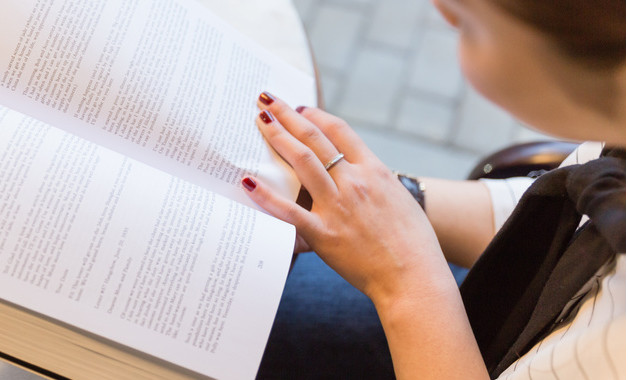
第1篇 小学英语短语词汇总结
these apples 这些苹果
those oranges 那些桔子
these or those 这些还是那些
good idea 好主意
play football 踢足球
a glass of milk/juice 一杯牛奶/果汁
a cup of coffee/tea 一杯咖啡/茶
at a snack bar 在一家小吃店里
something to eat 一些吃的东西
something to drink 一些喝的东西
some noodles 一些面条
how about...? ……怎么样?
orange/apple juice 桔汁/苹果汁
go to school by bike 骑自行车去学校
be free 有空
in the school 在学校
some chocolate 一些巧克力
some sweets 一些糖果
some dolls 一些洋娃娃
very much 很;非常
near her school 在她的学校附近
her parents 她的父母
第2篇 初三英语短语动词的四种类型知识点总结
动词与介词、副词等构成的固定短语,叫短语动词。主要有四类:
一、动词+副词
有的一般不跟宾语,如go ahead, fall behind, get up, lie down, go up, run out, give in, stay up等;有的可以跟宾语,如put out, carry out, give up, wake up, check in, eat up, fill in, find out, fix up, hand in, mix up, look up, make out, turn down, work out等。
注意:宾语是名词时,放在副词前面或后面都可以,但若作宾语的是人称代词时,就只能放在动词和副词之间了。如:
we’ve decided to put the meeting off (=put off the meeting) . 我们决定把会议推迟。
we’ve decided to put it off. 我们决定将它推迟。(不说put off it)
二、动词+介词
如ask for, care for, call for, break into, deal with, call on, look for等。后面必须接宾语。如:
i don’t care for tea. 我不喜欢喝茶。
三、动词+副词+介词
如look forward to, put up with, looked up to, go in for, go along with, date back to, look down on, keep up with, add up to, run out of等。如:
she soon caught up with us. 她很快赶上了我们。
四、动词+名词+介词
如take care of, pay attention to, make use of, make contribution to做出贡献等。如:
take care of your brother while i am away. 我不在的时候,你要照顾好你弟弟。
第3篇 八年级英语短语句型知识点总结
give sb.sth=give sth.to sb.给某人某物,give in投降,
give up doing sth放弃, give out 分发,
give a way to对...让步, on the earth在地球上,
both....and既....又..... 就近原则 neither....nor既不....又不,就近原则
either...or要么....要么.there be, not only...but also就近原则,,
may be可能是. maybe=perhaps大概,也许
in addition to ..除...以外(还有) =besides, but 除..之外,,常与否定意义词连用,当but前有do时but后接原形, except,除....之外(不包括)
on holiday度假, of course=,sure当然
all types of呼种, part time job,一份兼职工作
on one's own独自, be led by由....带领
module 6 过去进行时
用法:1.表示过去某一时刻正在进行的动作或正存在的状态,一般常和at that time, at 点yesterday, then, last night,this time yesterday ,the whole morning,when i arrived 等特定的过去时间连用。
2.表示一个过去动作发生时或发生之后,另一个动作正在进行或两个延续性过去的动作同时进行,常与when,while引导的时间状语从句连用。
结构:was /were +v-ing
go on继续, go on doing sth继续做某事(同一件事),
go on to do sth继续做某事(另一件事),
go on with sth继续做同一件事,但中间暂停过,
how is it going ?=how are you getting on /along?近况如何?
by the river,在河边
at this time yesterday昨天 的这个时候, in a tree=in the tree ,在树上(外来物)
on a tree =on the tree,在树上,(树本身的) smile at sb. 朝着某人微笑,
laugh at sb.嘲笑某人 fall into ,掉进,跌入
fall off掉下来, fall behind ,落后,跟不上
fall in love with,爱上 be careful,小心
by mistake由于出错 at that /this time在那/这时
have nothing to do没事可做, nothing strange没什么奇怪的,
take sth. out of ....把...从...拿出来, happen to do sth.碰巧做某事
感官动词see ,hear ,watch,feel ,notice,smell,taste后+名词或代词+动词原形(表示动作已经发生)后+名词或代词+ving(表示动作正在进行)
under th hedge在树篱下面, go down下去,
think about考虑, think of想起,认为,
think over仔细考虑, think out,想出
think hard,努力想,努力思考 what happened to sb.?某人发生了什么事?
be on上演, go off熄灭,停,
英语中当几个单数人称同时作主语时,先后顺序是“二、三、一”
not ...until直到....才......(主句中常用非延续性动词)
till/until直到......为止(主句中常用延续性动词)
something wrong with...,出了毛病, lie in bed 躺在床上,
jump out of从...跳出来,on one's way to someplace,在某人去某地的路上
on one's way home在某人回家的路上,from ....to,从...到....(动词+ving)
when,while ,as的区别 当...时候
when可与持续性动词连用,表示'一段时间,'也可与短暂性动词连用,表示'时刻'.主句的动作可以与从句的动作同时发生,也可以先后发生.如果主从句都是短暂性动词时,只能用when
while表示主句和从句的动作同时发生.其从句的动词必须为延续性动词,从句多用进行时态,也可用表示状态的动词的一般时态.如果主从句都是进行时,只能用while
as与when同义,但as指主句的动作和从句的动作交替进行或同步发展.
wear out穿坏,穿旧,用坏, cheer up 使振奋;使兴奋,
follow one's advice听从某人的建议, look into向...的里面看,
stop to do sth. 停下做另一件事 stop doing sth.停止做某事
stop ...from doing sth.阻止....做某事, what kind哪种,
a kind of一种, all kinds of =different kinds of 各种各样的,
kind of =a bit=a little有点, walk along沿着....走,
by mistake错误地,无意地, by oneself单独,独立地,
by the way,顺便说 墙的表面用on,墙的内部用in
have something to do有事可做,have something to eat有可吃的东西,
have nothing to drink没有什么喝的东西 feel tired感到疲劳
no one,一般不与of连用,动词用单数,只指人,一般用来回答who
none ,可与of连用,动词可用单数或复数,指人或物,回答how many /how much引导的问句,以及含any+n 的一般问句
nothing,指物,动词用单数,
without doing sth.没做, be tired=get tired累了,
during the day一整天,
被动语态的结构是:be+及物动词的过去分词
变法:1主+谓+宾语.将宾语变作主语,将谓语变被动语态,将主语变by宾语.
2.主+谓+间宾+直宾 将间接宾语变作主语,谓语变成被动语态,直接宾语不变.
3主+谓+直宾+间宾+to或for 将直变主,将谓变被告,其余不变.by原主
4.主+谓+宾+宾补宾作主,谓变被,其余不变,by原主.
5.主+谓+宾+宾补(let,see,make ,hear,watch ,feel, help, notice,observe,look at ,listen
to )变为被动时,后加to
6.主+短语动词+宾语, 宾作主,短变被,其余不变,by原主.
7.带有be going to,be about to ,be to ,have to ,used to ,be supposed to ,be sure to
等要将to后来动词变以被动









